In this article, we have compiled a list of the white stuff found in nature. Featuring white birds, white animals, white fruits and vegetables and much more, this list will inspire you to explore the white beauties of nature. These elements reflect the simplicity and diversity of nature.
If you are ready, let's embark on this white journey of discovery together. Here is an impressive list of white things found in nature...
Related: Blue Things, Orange Things, Green Things
Flowers
Korbin

Reflecting the elegance of white, the Rosa 'KORbin' or Iceberg rose is the eye-catching star of the gardens. Cultivated in Germany in 1958, this flower displays its white flowers all season. There are also different colors; in shades of pink and burgundy. Looks great in both gardens and vases. Moreover, this beauty even found a place on the stamps of Romania and New Zealand! Rosa 'KORbin' is not just a rose, she is also a cultural icon.
Lily of the valley
Lily of the valley, the herald of spring, that is, the lily of the valley! Found naturally in areas with particularly cold climates, this elegant plant is known for its white bell-shaped flowers.
So much so that these flowers emit such a pleasant fragrance that many perfumes are named after this plant.
But you have to be careful, because these beautiful flowers are poisonous to humans and animals! Interestingly, the French name for Lily of the valley "muguet" means glovewort in England, because it was used to make ointments for hand pain.
Jasmine
Jasmine is a magnificent flower that has established a throne in the hearts of almost everyone. It comes from the Oleaceae family and has more than 200 species.
This elegant plant, which has found its home in the tropical and temperate regions of the world, can be in the form of both a bush and an ivy. The most striking feature of Jasmine is undoubtedly the impressive scent of its flowers.
The fruits of this plant, which sometimes blooms white and sometimes yellow, are small-grained nuts that turn black as they mature. Did you know that Jasmine's name comes from Persian?
This magical flower, which does justice to its name, enchants the world with its fragrance!
Orchid

Orchid is a very diverse group of plants belonging to the Orchidaceae family. With approximately 28,000 recognized species, this family, along with Asteraceae, is one of the largest families of flowering plants in the world.
The number of orchid species is more than double the number of bird species and close to four times the number of mammal species. Orchids are easily distinguished from other plants because they have distinctive features: the bilateral symmetry of the flower, an often modified petal (labellum), fused stamen and pistil, and extremely small seeds.
Daisy
.webp)
Daisy is a plant of European origin and its name means "beautiful" and "perpetual". It is known for its white flowers that follow the sun. Its leaves and flowers can be used in various dishes. It is also used in herbal medicine. It is loved by children for making daisy chains.
Animals
Snowy owl

The snowy owl is the mysterious and graceful inhabitant of the cold poles. With its large, white plumage and impressive size, it is one of the bird species most admired by nature lovers. These beautiful birds are native to the Arctic areas of North America and the Palearctic regions.
The snowy owl is known for its daily hunting habit, which is one of its most interesting features. So these owls hunt during the day and not at night - this is especially evident in the summer. Snowy owls have developed a number of unique adaptations to adapt to this unique lifestyle.
Arctic fox
.webp)
The arctic fox is the snow-white, plush furry little beast of the arctic. Scientific name "Vulpes lagopus", this cute fox has made its home in the Arctic regions of the Northern Hemisphere.
It has adapted so well to living in cold environments that those who see it are stunned.
White Rhino

It is a rare species of rhinoceros that lives in Africa. It is large in size and has a gray skin close to white.
Great egret

During your travels, perhaps you have seen a graceful figure in a pond, with white feathers and long legs that seem to dance on the surface of the water. This is the great egret, also known as the great white heron. Indeed, we can say that it is a heron because this striking bird prefers to live in aquatic habitats, especially in shallow waters. It does not like to go into the shade, on the contrary, it is possible to see it in many tropical and temperate regions of the world, even in the entire sun belt.
White stork

White storks are one of the most well-known and loved bird species, and we've all heard stories of babies being brought by storks as children. These graceful birds have fascinating biology and impressive lifestyles.
The first thing you notice when you see a white stork is their elegant white plumage and distinctive black wings.
Their long red legs and long, pointed red beaks with black tips make them easy to spot. Perhaps the best representatives of their species, white storks also draw attention with their size.
Beluga whale
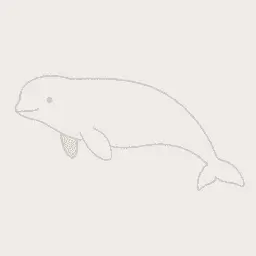
Beluga whale is an arctic inhabitant. There are many features that make these creatures extraordinary. Able to roll their eyes and have the best vocal communication network in the world, these beluga whales are particularly known for their white skin and humpback head, which is seen as a bulge in the 'whale world'.
White tern

The white tern is one of the graceful and lovely birds of the tropical oceans. Despite its small size, it has remarkable features. It is known for its white plumage and long black beak.
It nests on Coral islands, rocky outcrops, and man-made structures. It feeds on small fish and catches its prey by diving. Its nesting behavior differs from other sea terns because it does not nest and lays its eggs on bare twigs.
The white tern travels a wide area of the oceans and goes to wooded areas during the breeding season. The Polynesians used these birds as both food and pets. The white tern is called manu-o-Kū in Hawaiian and is considered the official bird of Hawaii.
Polar bear

The polar bear is one of the indispensable symbols of cold climates and glaciers.
It attracts attention with its large size and white fur. It lives in the Arctic region within the polar circle and often hunts on sea ice.
Seals are their main food source and lead a tough life as the sea ice melts. Climate change and habitat loss pose a major threat to the future of polar bears.
White butterfly

The small white butterfly (Pieris rapae) is a butterfly species belonging to the white and yellow family. It is known as the small white in Europe and the cabbage white or cabbage butterfly in North America. It has a white color with black spots on its wings.
The caterpillar is known as a pest on plants such as cabbage, collard greens, kale, and broccoli.
While this butterfly species is common in Europe and Asia, it has also spread to North Africa, North America, New Zealand and Australia as a result of accidental introductions. Little white butterflies are an interesting and colorful part of nature.
Tundra swan

The tundra swan is a small species of swan that lives in the Holarctic region. It is known as the Bewick swan in the Palaearctic and the tundra swan in the Nearctic.
Their breeding grounds are tundra regions, and during the winter they are mostly found in seaside meadows. They are migratory birds and migrate by flying in a V shape.
These swans attract attention with their white color and short neck structures.
Ross's gull

Ross's gull (Rhodostethia rosea) is a small species of gull. Pale gray and white in summer, this bird loses its breast color and neck ring in winter.
It breeds in tundras and marshes and nests with other seabirds. It usually lays two or three eggs and the incubation process takes about three weeks.
Ross's gull feeds on small fish, crustaceans and insects. It feeds in swamps in winter and travels short distances during migration. This rare and interesting bird species is a strikingly beautiful species that lives especially in the Arctic region.
American white ibis

The American white ibis (Eudocimus albus) is a striking bird with its white plumage and orange bill. It is found in tropical regions from North America to Mexico and Central America.
It feeds on small aquatic prey living in shallow waters. During the breeding season, it gathers in colonies near water. This beautiful bird is dazzling with its white plumage and is often seen in wetlands.
Snow goose
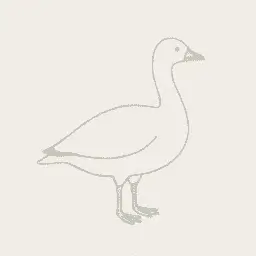
Snow goose (Anser caerulescens) is a goose native to North America. It attracts attention with its white and blue feathers. It is generally known for its dance-like flight on the snow.
They are among migratory birds and make long-distance migrations twice a year. They are known for their loud calls and often move in packs. Snow goose is an essential part of natural life and helps the surrounding ecosystem maintain balance.
Ivory gull

The Ivory gull (Pagophila eburnea) is a small species of gull that lives in the Arctic and is the only species in the genus Pagophila. Greenland has a circular distribution spanning across the northernmost points of North America and Eurasia.
Adult individuals have completely white plumage and do not have the gray back of other gull species. Their bills are blue and the tip is yellow, and their legs are black.
They feed on sea ice near their nesting sites and also accompany predators to feed on prey remains. Ivory gull is declining rapidly in Canada due to depletion of its resources and its international conservation status is classified as "Near Endangered".
Bali myna

Bali myna (Leucopsar rothschildi), also known as Rothschild's mynah, Bali sparrow or Bali mynah.
This medium-sized myna species, endemic to the island of Bali, has an almost entirely white appearance with a long, drooping crest and black tips on the wing and tail tips.
It has blue bare skin around the eyes, gray feet, and a yellow beak. Both genders are similar. The estimated number of adults in this critically endangered species in the wild was less than 50 in 2020. The Bali myna is a highly endangered species, mainly due to threats such as habitat loss and illegal hunting.
Great white shark
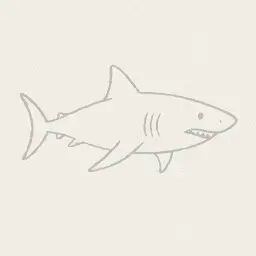
The white shark is a large species of makrel shark found in the coastal waters of major oceans. The largest female specimen of this species, which draws attention with its size, is 5.83 meters long and weighs approximately 2,000 kg at maturity.
But most are smaller; males are usually 3.4 to 4.0 meters long, while females average 4.6 to 4.9 meters long. Their lifespan is estimated to be up to 70 years, making it one of the longest living cartilaginous fish known.
The white shark is the highest-ranking species on the food chain and preys on many marine mammals, from large whale species such as dolphins.
Beluga

Beluga is a species belonging to the sturgeon family. It is found in the Caspian Sea and the Black Sea. Due to the valuable caviar of the females, it is among the endangered species as a result of overfishing. It is a large fish and has an elongated body.
The largest belugas can grow up to 7 meters tall and weigh many tons. This magnificent fish species can live for a long time in its natural habitat and can travel great distances.
However, it is protected due to the drastic decline in its populations and its hunting is strictly regulated.
Foods
White rice

White rice is a type of ground rice from which the husk, bran and embryo have been removed. Processed white rice has a delicious and visually appealing appearance.
However, this process reduces its nutritional value and causes it to lose some important vitamins and minerals.
White rice is often enriched with nutrients removed during processing. In this way, some deficiencies are tried to be eliminated. Although it has lower nutritional value than brown rice, white rice can still be a nutritious option.
White rice is a widely consumed food item around the world and is used in many different recipes.
Cauliflower

Cauliflower is one of the vegetables belonging to the Brassica oleracea species in the Brassica genus and is in the Brassicaceae (mustard) family. It is an annual plant that reproduces by seed.
Usually only the head is consumed – the edible white meat portion is sometimes called a "cheek" (it has a similar appearance to a cheesy cheetah).
The head of cauliflower consists of a bunch of white flowers. Cauliflower heads are similar to broccoli, which consists of flower buds. Brassica oleracea also includes vegetables such as broccoli, Brussels sprouts, kale, collard greens, and kale. All these vegetables are called "chole" plants, but they belong to different cultivar groups. It is one of my favorite white foods.
Onion
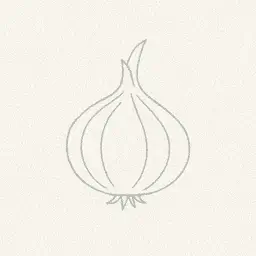
Onion is a vegetable of the Allium genus. It is used raw or cooked, and it is frequently used in pickles. It has a wide range of uses and is cultivated throughout the world.
Garlic
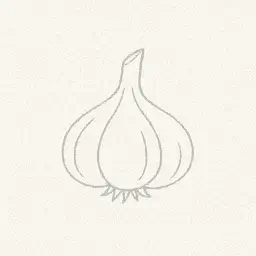
Garlic is a type of bulbous plant belonging to the genus Allium. It has close relatives such as onions, leeks, green onions and rosemary.
It is native to South Asia, Central Asia, and northeastern Iran and has been used as a spice around the world for thousands of years. It is known to the ancient Egyptians and is used both to flavor dishes and in traditional medicine.
China provides 76% of the world's garlic production. Garlic can be used raw or cooked in cooking and has health benefits as well. Brief information about garlic is given in the text, not exceeding 100-120 words.
Coconut

Coconut (Cocos nucifera) is a plant species belonging to the palm family (Arecaceae) and the only living species of the genus Cocos. The term "coconut" may refer to the coconut palm, seed or fruit. Botanically, the coconut fruit is a drupe, which is a seed fruit, not a nut.
Its name derives from the three face-shaped cavities in the coconut shell. It is common in coastal tropical regions and is a cultural symbol of tropical icons.
The coconut tree is used for many purposes, including food, fuel, cosmetics, folk medicine, and building materials. The interior of the mature seed and the coconut milk derived from it form a regular part of the diets of people in many tropical and subtropical regions.
White chocolate

White chocolate is a dessert usually made from sugar, milk and cocoa butter and does not contain cocoa solids. It is pale ivory in color and does not contain many of the compounds found in milk, dark and other chocolates. It is solid at room temperature (25 °C) because cocoa butter, the only white cocoa bean component, has a melting point of 35 °C.
Like the other two main types of chocolate (dark and milk), white chocolate is used as a coating in chocolate bars or candies.
Mozzarella

Mozzarella is a type of cheese native to Italy. It is made from Italian buffalo milk and is consumed fresh. Mozzarella, which is white in color, has a high moisture content and is often used in pizza and pasta. It is one of the indispensable flavors of Italian cuisine.
Rocks
Marble

Marble is a type of metamorphic rock composed of carbonate minerals. It usually contains calcite or dolomite and has a crystalline texture. Marble is widely used in sculpture and as a building material. It recrystallizes under the influence of high temperature, pressure and water and has a non-layered structure. Marble has strong durability and resistance to wear and is therefore a popular construction material.
Quartz

Quartz is a hard mineral. It can be found in different colors from colorless to black. Quartz, a precious stone, has durable and piezoelectric properties. It has a value of 7 on the Mohs hardness scale. It is an important mineral.
White dwarf

A white dwarf is the remnant of a very dense and low luminosity stellar core. It does not perform nuclear fusion and provides its energy by emitting residual thermal energy. It is mostly made up of carbon and oxygen.
The mass of the star is low enough to prevent the formation of a neutron star or black hole. The closest known white dwarf is Sirius B. White dwarfs make up the vast majority of stars in the Milky Way.
By cooling for an extended period of time, it becomes unable to produce energy and eventually turns into a cold black dwarf. The existence of white dwarfs was discovered in 1910, and thousands have been discovered to date.
White hole

The white hole is a hypothetical region of spacetime in general relativity. In contrast to black holes, energy-matter, light and information can escape through white holes, but cannot be entered from outside.
The existence of white holes has been suggested theoretically, but it has not been observed that they can occur through natural processes. It is thought that supermassive black holes may exist in their centers and that super white holes may arise.
White holes have properties such as mass, charge, and angular momentum. However, more research on white holes is needed.
Others
Wedding dress

The history of wedding dresses begins with the popularization of white during the Renaissance. Classy wedding dresses offer a timeless look to brides by combining simple and elegant designs with elegant touches.
Alpine Mountains
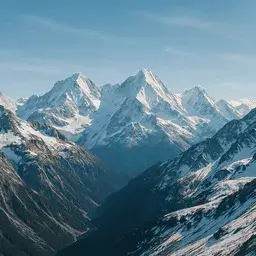
The high mountains in and around Switzerland are mostly covered in snow and are famous for their scenery.
Snow line
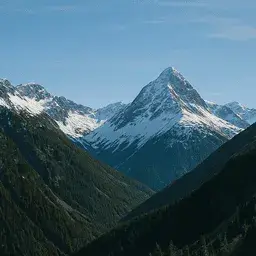
The snow line is the boundary between the snow-covered and non-snowy surface. This limit may change seasonally and may differ depending on elevation, geographic location and climatic conditions. The snow line is measured using automated cameras, aerial photographs or satellite imagery.
The snow line is used as an important parameter in hydrological models and is evaluated to understand the effects on the growth or contraction of glaciers. This knowledge also plays an important role in scientific research on climate change and glacier meltdowns.
Glacier
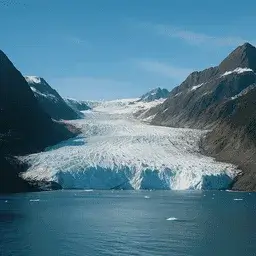
A glacier is the dense accumulation and movement of ice. Glaciers form when the accumulation of snow is greater than erosion.
The glacier flows slowly and shapes its surroundings with its weight. It is found on most of the land and contains most of the Earth's freshwater resources.
The glacier is considered a particularly important indicator for climate change and contributes to changes in sea level. Glaciers offer spectacular natural landscapes and are vital to ecological balance.
Iceberg
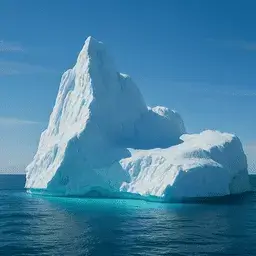
An iceberg is a large body of ice that has broken off from glaciers and floats in open water. Because most of the iceberg is below the water surface, only a small part of it is visible.
Icebergs can be of different sizes and shapes. Icebergs breaking off from glaciers in Greenland often have irregular shapes, while those breaking off from Antarctica are generally planar.
Icebergs pose a serious hazard to shipping and can strike ships and cause damage. At the same time, icebergs are important as an indicator of climate change. Sea level changes can occur as icebergs melt and break apart.
Salt pan

Salt pans are natural formations known as a flat area covered with salt and other minerals that shine under the sun. These boards form in deserts where water evaporation exceeds precipitation. Water stays on the surface and accumulates salts over time.
Salt boards often appear white and reflect the sun's rays. For example, the Bonneville Salt Flats are a well-known salt board in Utah. But salt boards can sometimes be dangerous and turn into a trap that can be buried in mud.
Cloud

A cloud is a collection of water droplets or ice crystals suspended in the atmosphere. Clouds form as a result of the cooling or condensation of water vapor. Clouds can be seen in different shapes and sizes in the sky and are associated with the weather. Clouds play an important role in the formation of various weather events such as rain, snow, hail.
Hail
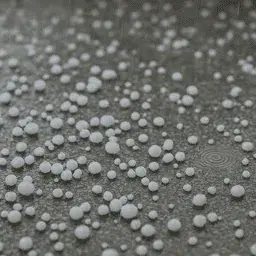
Hail is a solid form of precipitation and consists of ice balls or irregular clumps of ice. Hail particles generally have diameters ranging from 5 mm to 15 cm. Hail forms in thunderclouds with dense updraft currents and high liquid-water content.
Strong upward air movement and low freezing levels are essential for hail to grow. Hail grows with the accumulation of super-cold water droplets and can reach sizes that can cause damage.
Hail is more common in mid-latitudes inland and less common in the tropics. Weather radar and satellite imagery are used to detect and monitor hail-producing thunderstorms.
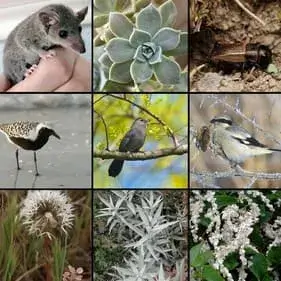
Other White Things: Pokemons, Emojis, Cartoon Characters